Arduino Nano Every Pinout, Specifications, Schematic datasheet
Содержание
- Introduction to Arduino Nano Every:
- Arduino Nano Every Pinout:
- Specifications:
- Arduino Nano Every Schematic:
- Arduino Nano Every Microcontroller datasheet:
- Arduino Due Dimensions/ Size:
- Where to Buy?
The Arduino Nano Every is a pin equivalent and evolved version of the Arduino nano board. It comes with an even more powerful processor ATmega4809 (20Mhz) and a larger ram capacity of 6 KB (3 times). Arduino Nano Every Pinout is explained in detail in this post.
Arduino nano every board also features a micro-USB port instead of a mini-B port, unlike the previous Nano board. It has 20 digital I/o pins, 8 analog inputs, and a RESET button. Arduino Nano every pinout, specifications, schematic, and datasheet is given below.
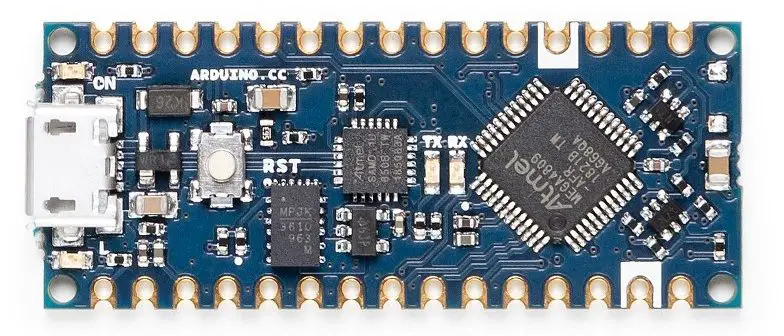
Arduino Nano Every Top view
Introduction to Arduino Nano Every:
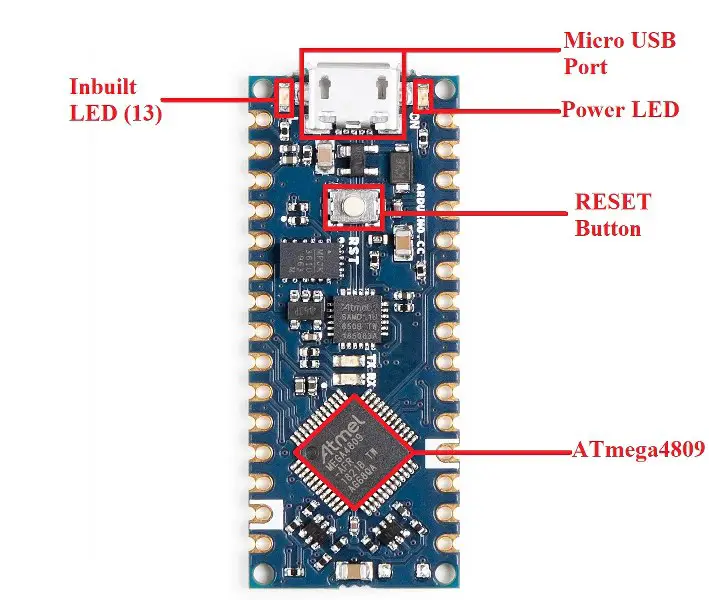
Introduction to Arduino Nano Every
Atmega4809 Microchip : It is an 8-bit AVR processor developed by Atmel that can run up to 20MHz. It comes with 6KB of SRAM , 48KB of flash , and 256 bytes of EEPROM. The chip features the latest technologies like flexible and efficient-power architecture, including Event System and Sleepwalking, precious analog features, and advanced peripherals.
Micro USB port : The Nano every comes with a micro-USB port, unlike the previous Arduino Nano board that comes with the mini-USB-B port. The port can be used to power up the board as well as to connect the board to the computer for flashing the code.
RESET button : The board comes with a RESET button that can be used to reset the board and begin the execution of the program from the beginning.
Power LED : The board comes with a power Led that lit up as soon as the board is connected to a computer.
Inbuilt LED (13) : An Inbuilt LED is present on the board that is connected to pin no 13. This Led can be controlled by switching the pin HIGH or LOW.
RX and TX LED : On the board, there are two more LEDs connected to the UART pin 17(RX) and 30(TX) respectively.
Arduino Nano Every Pinout:
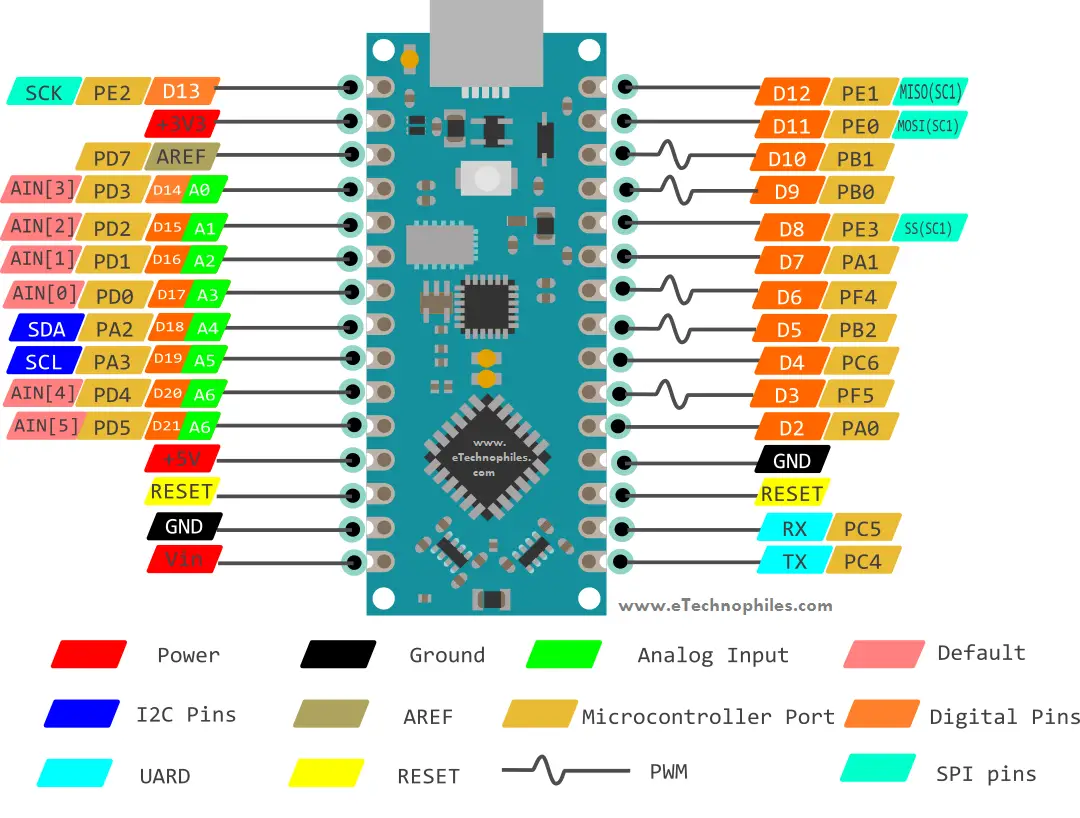
Arduino Every Pinout
As shown in the above Arduino Nano Every pinout image, the board consists of 30 pins in total, 20 of which are digital I/O pins. Out of these five are PWM enabled, with 8 analog input pins.
Power pins on Arduino Nano Every Pinout:
Vin : It is the input voltage pin that powers up the Arduino board. When a certain voltage is given via the USB port to power the board, this voltage also shows up at the Vin pin.
3v3 : The 3.3V pin generates an output voltage of 3.3v.
5v : The 5V pin generates regulated 5v output for the externally connected components. The power source of the 5V pin for the Arduino Nano Every board is a USB connector and the Vin.
GND: Two ground pins are available on Arduino Nano Every board.
Digital pins:
- There are 20 digital I/O pins on the Arduino Nano Every board that can be used as an input or output. They operate at 5 volts.
- The Arduino Nano Every digital pin can read one of the two states: when the electric signal is present and when it is absent. This type of input is usually known as digital type (or binary) and these states are referred to as HIGH which is 1 or LOW which is 0.
PWM pins:
- The five pins from the set of digital pins are PWM (Pulse Width Modulation) pins which are numbered as 3, 5, 6, 9,and10 .
- Each PWM pin provides 8-bit PWM output .
- To generate the PWM output, syntax “ analogwrite(PWM Pin, PWM value) ” is used. PWM output value varies between 0 (0 volts) and 255 (5 volts).
Analog Input Pins:
- The Arduino Nano Every consists of 8 analog inputs , labeled as AX (where X is pin no.). All of these pins can also be utilized as digital I/O pins.
- Each one of the analog pins is connected to an inbuilt ADC of 2 10 -bit (i.e., 1024 different values) resolution.
I2C pins:
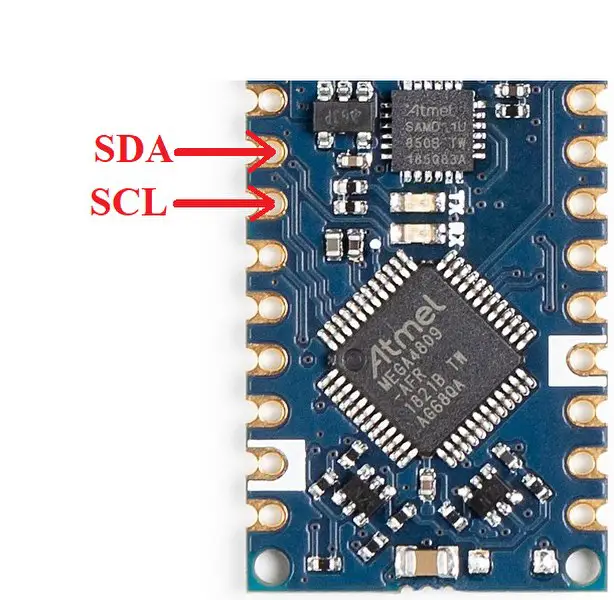
Arduino Nano Every I2C pins

I2C is the two-wire serial communication protocol. The I2C protocol stands for Inter-Integrated Circuits. The protocol uses two pins for sending and receiving clock data as well as serial data: a serial clock (SCL) pin and a serial data (SDA) pin.
- SCL-It stands for Serial Clock. It is used for sending the clock data between the devices. It is also used for synchronization purposes; this pin is provided by the master device.
- SDA-It stands for Serial Data. This pin is operated by both the slave and master device. The purpose of this pin is to send and receive the data. That’s why it is also called a data line, while SCL is known as a clock line.
External Interrupts:
Unlike the Arduino Nano board, the external interrupts are allowed on all pins, not just pin D2 and D3.
SPI pins:
- It stands for Serial Peripheral Interface.
- This serial communication protocol is used to send the serial data between the microcontroller and one or more peripheral devices efficiently.
- The board consist of 4 SPI pins:
- SCK (Serial Clock) D13
- SS (Slave Select) D8
- MOSI (Master Out Slave In) D11
- MISO (Master In Slave Out) D12
Note : O n Arduino Nano, SS is connected to the digital pin 10.
UART pins:
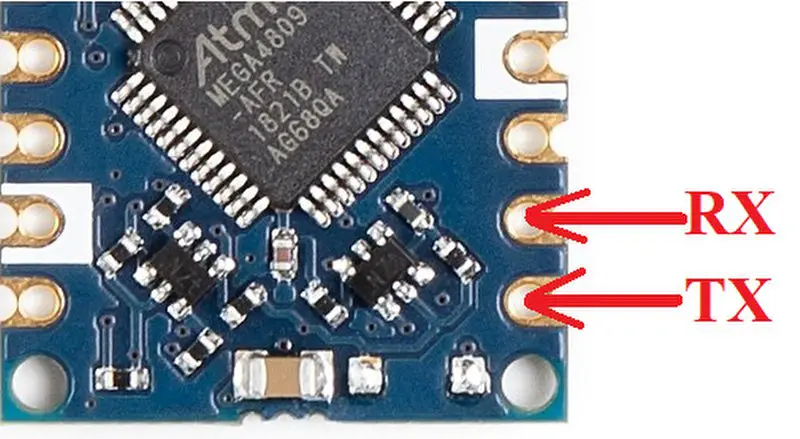
Arduino Nano Every TX and RX pins
UART pins are used for serial communication. 0 (RX) to receive the data, and 1 (TX) to transmit (TX) TTL serial data using the ATmega4809 advanced hardware serial capabilities.
Specifications:
| Microcontroller | ATMega4809 (datasheet) |
| Operating Voltage | 5V |
| VIN min-MAX | 7-21V |
| DC Current per I/O Pin | 20 mA |
| DC Current for 3.3V Pin | 50 mA |
| Clock Speed | 20MHz |
| CPU Flash Memory | 48KB (ATMega4809) |
| SRAM | 6KB (ATMega4809) |
| EEPROM | 256byte (ATMega4809) |
| PWM Pins | 5 (D3, D5, D6, D9, D10) |
| UART | 1 |
| SPI | 1 |
| I2C | 1 |
| Analog Input Pins | 8 (ADC 10 bit) |
| Analog Output Pins | Only through PWM (no DAC) |
| External Interrupts | all digital pins |
| LED_BUILTIN | 13 |
| USB | Uses the ATSAMD11D14A (datasheet) |
| Length | 45 mm |
| Width | 18 mm |
| Weight | 5 gm (with headers) |
Arduino Nano Every Schematic:
To download the schematic of Arduino nano every schematic in pdf format, click here.
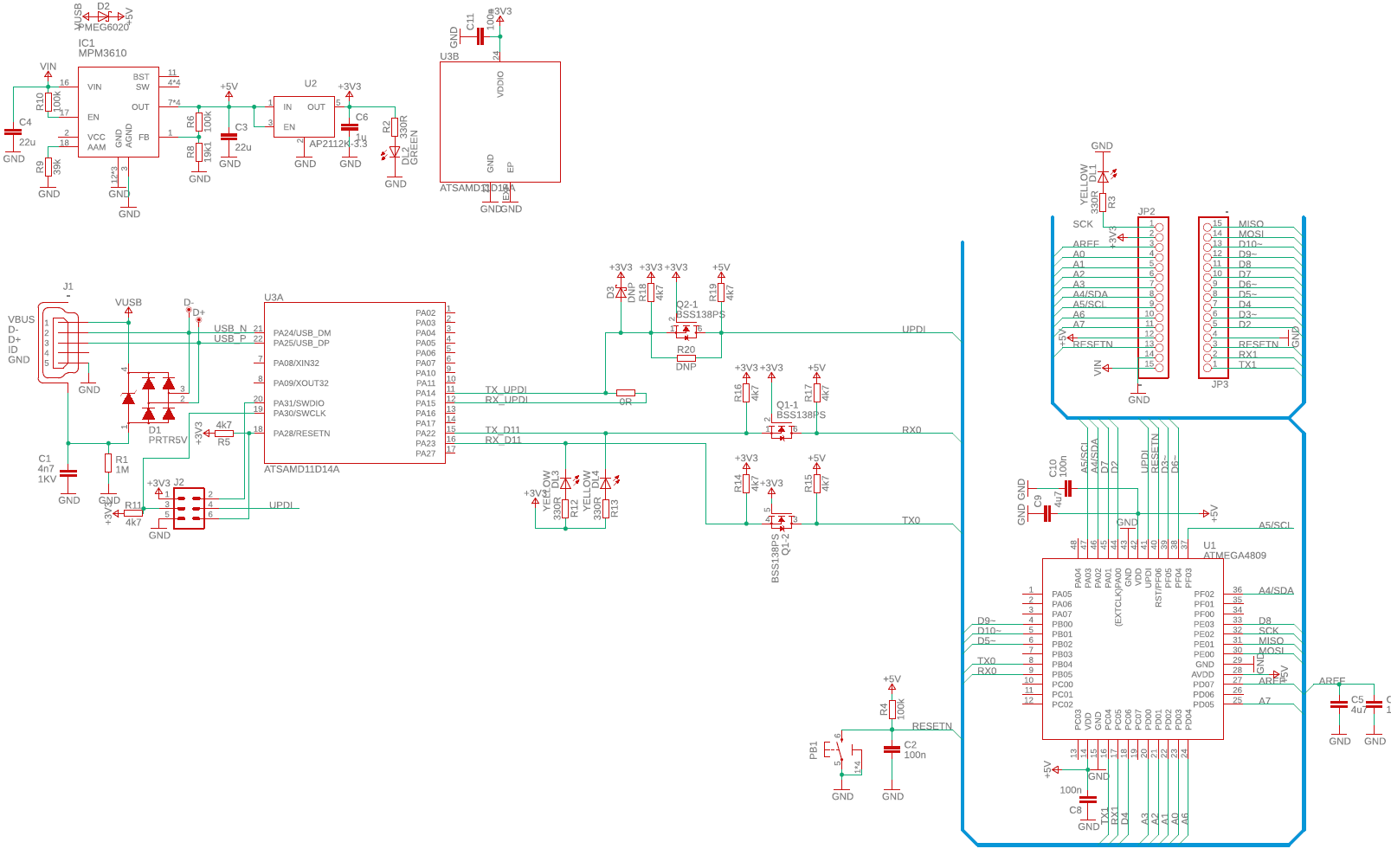
Arduino Nano Every Schematic
Arduino Nano Every Microcontroller datasheet:
To download the datasheet of the Arduino microcontroller 4809 present on Arduino Nano every, click here.
Arduino Due Dimensions/ Size:
Size/dimensions of Arduino Nano every board is 45x18mm .
Where to Buy?
You can get the original Arduino Nano Every board in different stores. But if you want to get it from Amazon, we recommend you the following sellers:
Источник:










